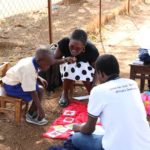Country
Year
Assignment
Funding
Theme
Scope of Baseline in Ghana and Ethiopia
The SHINE project is designed to facilitate women’s participation in the enhanced production of agricultural products and development of associated women-led agribusinesses in Ethiopia and Ghana. The purpose of the baseline assessment was to set the starting point for the project’s outcome indicators defined in the performance measurement framework (PMF) and provide a foundation for understanding progress towards the expected results by the end of the project. Additionally, the baseline data will be used to inform the establishment of realistic targets for the project, inform project implementation and to develop the monitoring plan for the project.
Methodology of Baseline in Ghana and Ethiopia
The assessment was utilization-focused to ensure that the intended users will be able to apply the results in their context. A mixed-methods approach was used for the baseline assessment incorporating both quantitative and qualitative data to provide a detailed understanding of each outcome level indicator of the SHINE Project. This baseline study was carried out in the two countries where the project is to be implemented, namely Ghana and Ethiopia, by a group of experts led by Armel Oguniyi, Senior Evaluator and Founder at ar-mel.
Outcomes of Baseline in Ghana and Ethiopia
The baseline for the SHINE project in Ghana and Ethiopia has enabled us to establish the current state of progress in both countries, in order to better orientate interventions, which must be aligned with community needs. The project’s results indicators were defined for the Performance Measurement Framework (PMF), and precise objectives were formulated.





